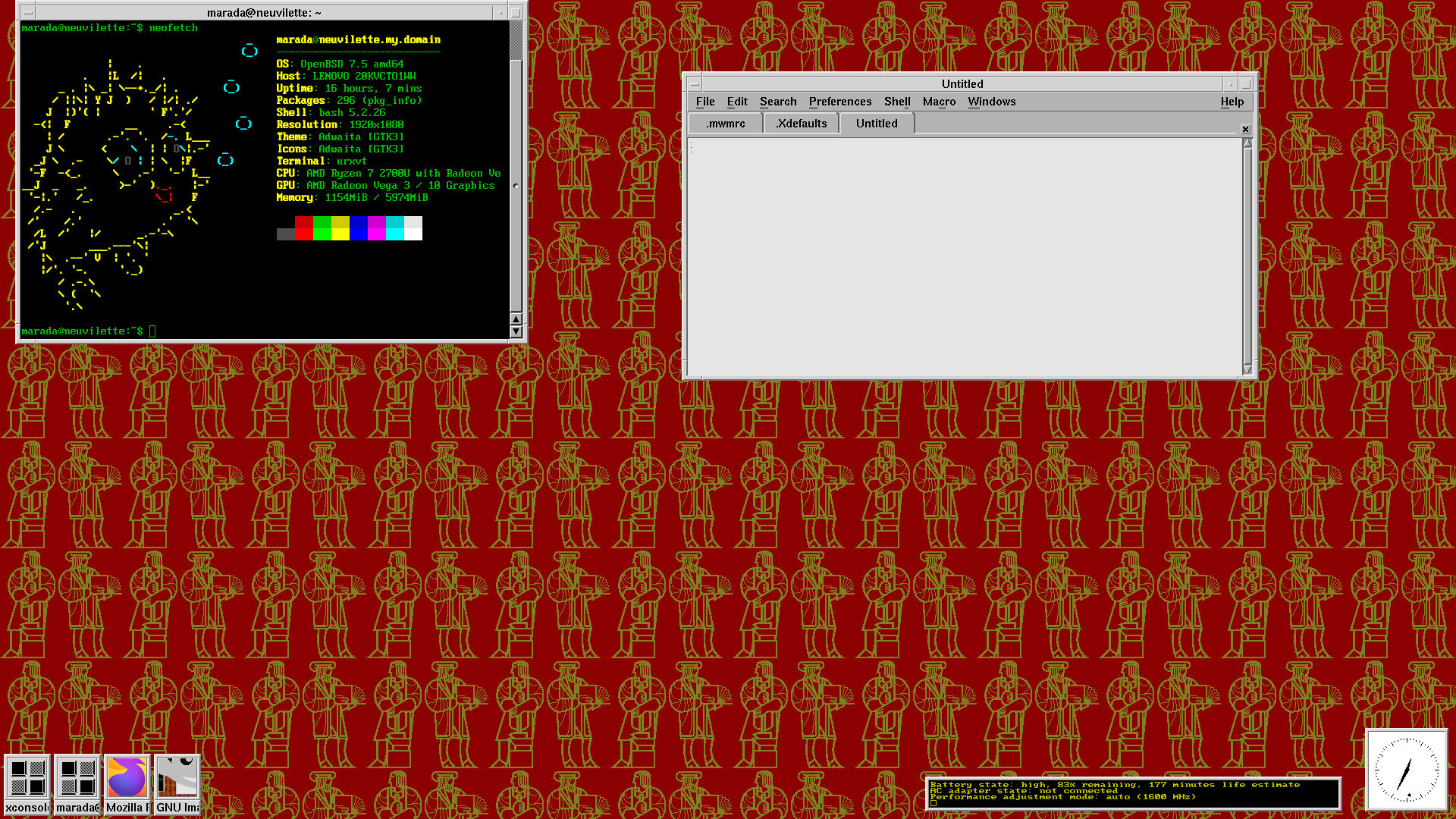Writing this up because I haven't seen a proper review.
Note I've only been using the case for about a day so I don't have a strong baseline on thermals; this is mostly about the build experience.
Why I was interested
My preference towards cases is very old-school. I like external drive bays, and have no interest in tempered glass or RGB. My long-term daily driver was a Cooler Master HAF XB, which is a delight to build in and offers exceptional expandability for its size.
The one place it's sort of limited is depth for GPU-- I have an ASRock OC Formula 6900XT, and it's 330mm, and you have to remove front fans and carefully wiggle to get it out of a slot. This has resulted in me breaking the stupid clip on my mainboard.
So I had a $125 rebate voucher burning a hole in my pocket and a growing sense that most of the remaining cases with drive bays will be gone in another year or two, so I'd better get one now or it will be gone.
The obvious question
Yes, the front panel can be opened over the intake fans. It's a seperate piece held in with like 8 snaps. The pictures on product pages look like CGI, so it's not clear if this is a decorative cut or an actual removable panel. It's sort of unfinished-- a big "B" moulded into it. You could probably cut some mesh or 3-D print something and attach it with magnets for easier removal.
Positives
The case's aesthetics, as much as there are any (it's much plainer than old style plastic and metal cases tended to be) are defined by the "five-head" -- the big plastic shell that goes about 3cm above the top of the metal chassis itself. This actually does offer some nice features over the typical "stamped metal with a fan grille drilled in it" top panel: the top mesh element pops out on spring-loaded clips, and that gives you an extra degree of access to the internals from above. Obviously, the intent is to either mount fans there or leave the plastic sound deadeners in place, but this does help with the build.
The drive bays are deep enough for modern optical drives with a bit of clearance, so they aren't intruding into the mainboard area. Both four-bay 3.5" cages can be removed.
The captive screws and pressure springs to retain optical drives work well, but why only two sets of captive screws when there are three bays?
Negatives
There are numerous cable management holes, but they tend to be on the small size. My PSU (old Corsair RM1000x) has thick and inflexible cables because there are capacitors built into the cables, and the main ATX cable barely fit through the hole. I was able to get a fairly clean build with some effort though. (By detaching the ATX cable from the PSU and feeding it in that way, you avoid trying to cram the thickest part through the small hole.
Only six standoffs are pre-installed. Three extra are included in the box (I'd prefer four, since many mainboards have 10 mounting holes and you can be pathological). When I went to install the other three, they were not smoothly pre-tapped; a small "nut driver" adapter is provided to mount them properly, but this was frustrating, and since I didn't notice the "nut driver" at first, I ended up fighting with a real nut driver that was too small to provide sufficient torque.
It includes a GPU support, which is cleverly designed-- you can slot it into a rail, screw it down tight, and set an arm to prop the card up. Unfortunately, it was not suitable for the OC Formula 6900XT, a tall, 2.5 slot monstrosity-- you could only barely bolt it in at the edge of the rail, and the arm ends up in a poor position to engage the card-- it's simply too short and would end up having to poke directly into a fan. I ended up using the supplementary bracket ASRock provided with the card.
Neutral
The top and front plastic panels are held on with pressure-fit clips, you can pull them off manually. This makes it slightly precarious if you grab the top of the case the wrong way.
It comes with three stock fans which are reasonably quiet, but I hear a mold hum with the case at ear-height. It's probably less noticable when the case is placed on the floor-- with no tempered glass, it's probably safer to kick.
The fans are wired to a rudimentary fanbus (off-low-high), which has extra headers, but are only 3-pin models. I may end up replacing them with my old Arctic P12s and bypass the fanbus so I can get monitoring through the mainboard.
Overall, I found you might not be able to use the most obvious cable routing for some cables, i. e. the front panel USB and audio, due to length and routing needs. This is obviously dependent on the choice of mainboard. I also ended up cracking out my extra-long SATA cables; your routing may be easier, but I had problems with the onboard SATA and optical drives, so I use a M.2 to SATA card to get some ports that work reliably.
The aesthetic is a little weird due to the "five-head" design. While it's very subdued and plain in many ways, the idea that drive bays start a random-looking 5cm from the top of the case resonates strangely with me; it seems like if asked an AI to draw a full tower case. I suspect that it might be possible to coopt some of that space for something more useful, like a card reader, but I'm trying to avoid breaking out the Dremel just yet. The printed-on "Silent Titan" logo is odd; I already bought the case, you don't need to remind me what it is.
Overall
The case is serviceable and delivers on most of the important things I was looking for (screaming "IT HAS DRIVE BAYS" in that classic girl "IT HAS POCKETS" style). I suspect many of my issues with the build were due to corner-case compatibility issues.






ARM has a high probability of blowing a tire.
They have a complex relationship with their licensees which may try to cause self-sabotage trying to pull more of the money home. See the various licensing fights.
If you don't want or need x86, what does ARM have to offer-- in the long term-- over RISC-V, which is much less coupled to a single firm's caprice? We can assume the gap in performance will continue to shrink ovrr time.